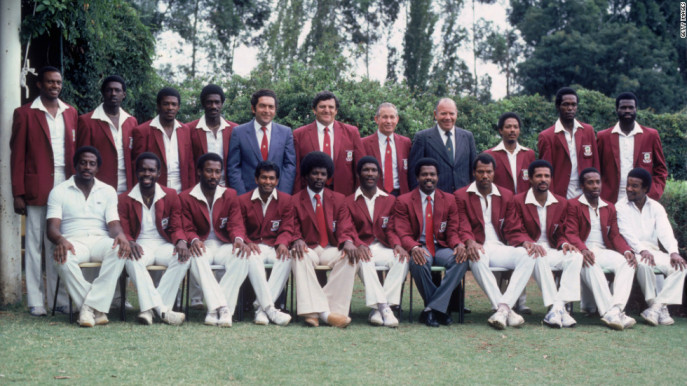
The roar of the crowd. The thunder of fast bowlers. The swagger of dominance. Once upon a time, West Indies cricket ruled the world. Names like Clive Lloyd, Vivian Richards, Malcolm Marshall, Courtney Walsh, and Brian Lara defined a golden era when the Caribbean team was nearly unbeatable. They set the benchmark for excellence in both Test cricket and early One-Day Internationals.
But today, the story feels different. The vibrancy remains, yet the dominance has faded. The West Indies are no longer the feared giants of world cricket. Instead, they often find themselves struggling to keep pace. What happened to this once-mighty force?
The reasons are many—player disputes, financial struggles, and governance issues. But one question is especially intriguing: did international rule changes themselves play a role in West Indies cricket’s decline?
Shifting Sands: The Rise of Limited-Overs Cricket
Cricket today is not the same game it was 40 years ago. With the arrival of One-Day Internationals (ODIs) and later Twenty20 (T20), the sport changed dramatically. The shorter formats put a premium on instant impact—big hitting, sharp fielding, and clever variations in bowling.
For the West Indies, whose golden era was built on patient batting and relentless fast-bowling attacks in Tests, this shift disrupted their natural rhythm. Suddenly, cricket wasn’t about wearing down opponents over days but about striking fast and hard. Players trained in the traditional style often found themselves at a disadvantage.
The rise of T20 also created new career paths. Specialist “freelancers” could earn life-changing sums in franchise leagues, often eclipsing what they earned representing the West Indies. For many, national duty began to take a back seat.
Rules That Favored Batsmen
Alongside format changes, several rule adjustments tilted the game toward batting. Powerplays and fielding restrictions meant bowlers had fewer fielders protecting the boundary early in the innings, giving batsmen license to attack.
Some venues shortened their boundaries, further boosting scoring rates. Even technology like the Decision Review System (DRS), while fairer overall, has been argued to favor batsmen in close LBW calls. For a team built on intimidating fast bowling, these changes eroded a core strength.
The Evolution of the All-Rounder
Another shift was in the type of cricketer valued most. In the past, West Indies dominated with raw pace and specialist batsmen. But as limited-overs cricket grew, the demand for versatile all-rounders—especially spinners who could bowl tight overs and score quick runs—soared.
Other nations invested heavily in developing such players. West Indies, traditionally pace-heavy, often struggled to match this trend, leaving strategic gaps that opponents exploited.
The Role of Administration and Structures
Of course, rules alone don’t tell the full story. How a cricketing body responds to global change is equally crucial. Here, West Indies cricket fell short.
Cricket West Indies (CWI) has long faced criticism for mismanagement, weak domestic structures, and ongoing disputes with players over contracts and pay. As the international game evolved, domestic competitions often failed to prepare players for modern demands. Without proper investment in coaching, infrastructure, and player welfare, adaptation lagged.
A Global Marketplace for Talent
As T20 leagues flourished worldwide, West Indian players became hot commodities. From the IPL to the Big Bash, their explosive style was in high demand. But while this raised individual profiles, it also meant that the national team was often deprived of its best talent—especially in Tests and ODIs.
The very rules and formats that elevated global cricket created a drain on West Indies resources. Other countries adapted quickly with better systems and deeper talent pools. The Caribbean, fragmented across islands with limited finances, struggled to keep up.
What the Numbers Say
The statistical story is clear. Once proud of world-beating win/loss records, the West Indies’ performance in Tests and ODIs has steadily declined. Batting averages show inconsistency, with aggressive intent often leading to collapses. Bowling, once their defining weapon, has struggled for control and penetration in limited-overs formats where economy rates are critical.
Former greats like Michael Holding have openly said that rule changes robbed fast bowlers of their edge, while Brian Lara and others have spoken about the mental shift needed for T20 cricket. Where other nations adapted, West Indies often stumbled.
Conclusion: A Perfect Storm
The decline of West Indies cricket cannot be pinned on rules alone. Internal disputes, governance issues, and the lure of global leagues all played their part. Yet, it’s undeniable that changes in international formats and rules challenged the very style of play that once made the West Indies invincible.
Where once fearsome fast bowling and patient batting ruled, today the game rewards versatility, power-hitting, and adaptability. Unless the West Indies adapt their structures, invest in modern player development, and find a way to balance national duty with franchise opportunities, the glory days may remain a distant memory.
The game never stops changing. To rise again, West Indies cricket must change with it—while keeping alive the flair that once captured the world.





